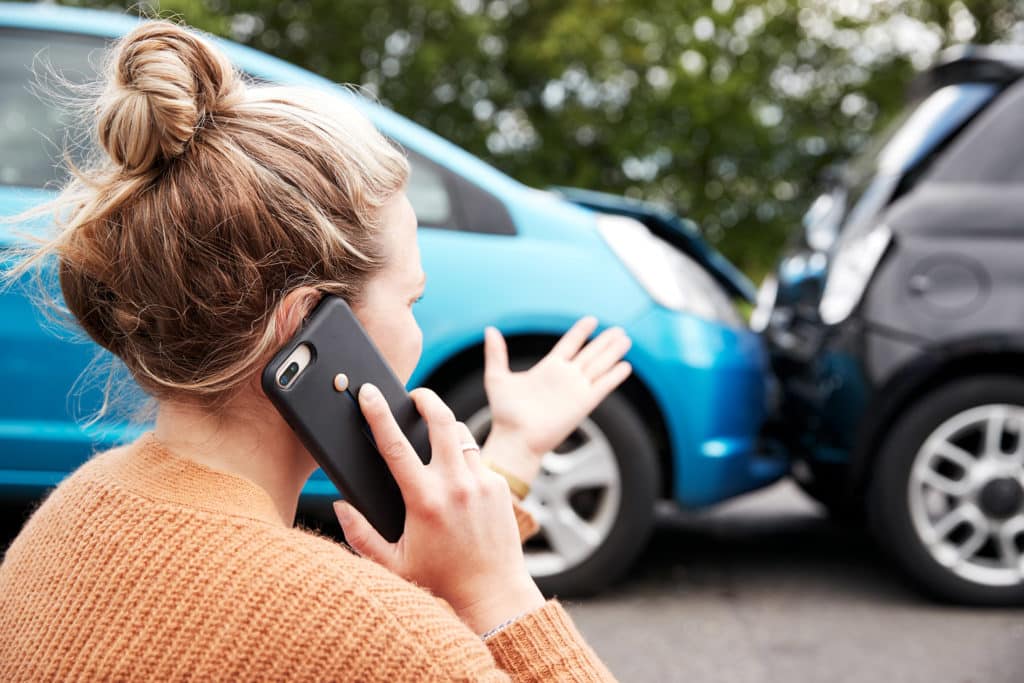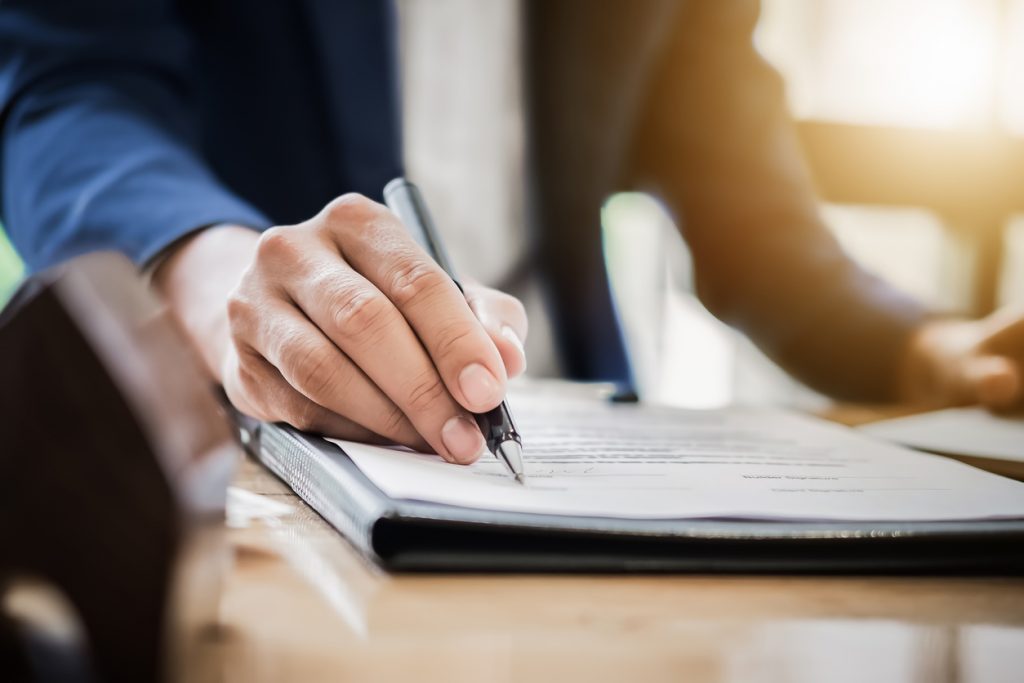If You Get in an Accident With Someone Else’s Car
Getting into an accident with someone else’s car can be a stressful and confusing experience, and it’s vital to stay calm and collected and take appropriate actions to ensure your safety and well-being as well as that of others involved. Here’s a comprehensive guide to help you navigate this situation effectively.
Steps to Take After an Accident
1. Ensure Safety:
The primary concern after an accident should be ensuring the safety of yourself and others involved. Check for injuries and seek medical attention immediately if necessary. Move your vehicles to a safe location if possible, turn on your hazard lights, and place warning triangles to alert other drivers. If you’re unable to move your car, stay inside with your seatbelt fastened and wait for assistance.
2. Exchange Information:
Once you’ve ensured safety, exchange essential information with the other driver(s) involved. This includes your names, contact details, insurance information, license numbers, and vehicle details. Take clear pictures of the accident scene, including the damage to both vehicles and any visible injuries. If there are any witnesses, get their contact information as well.
3. Report the Accident:
Depending on the severity of the accident, you may need to report it to the police. This is particularly important if there are injuries, significant property damage, or if you suspect the other driver may be under the influence of alcohol or drugs. The police report will provide an official record of the kejadian and help determine fault and liability.
4. Contact Your Insurance Company:
Notify your insurance company about the accident as soon as possible. They will guide you through the claims process and help you file a claim against the other driver’s insurance policy. Be honest and provide accurate details of the accident to your insurance provider.
5. Seek Medical Attention:
Even if you don’t feel injured immediately after the accident, it’s crucial to seek medical attention as soon as possible. Some injuries, such as whiplash or concussions, may not manifest right away. A medical professional can evaluate your condition, provide treatment, and document your injuries for insurance purposes.
6. Protect Your Rights:
It’s important to protect your legal rights after an accident. Do not admit fault to the other driver or the police, as this could impact your insurance claim. If you have any concerns or questions, consider consulting with an attorney who specializes in personal injury law.
If You Get in an Accident with Someone Else’s Car
If you find yourself in the unfortunate situation of being involved in a car accident with someone else’s vehicle, it’s essential to respond appropriately to ensure both your safety and the well-being of others. Here’s a comprehensive guide to navigate this stressful experience:
Safety First
The most important priority following an accident is to prioritize everyone’s safety. Pull over to the side of the road if possible, and turn on your hazard lights. This will alert other drivers and emergency services to the incident. If you’re unable to move your vehicle, don’t panic. Stay calm and wait for help to arrive. Check yourself and your passengers for any injuries, no matter how minor they may seem. If you or anyone else is hurt, seek medical attention immediately.
Exchange Information
Once you’ve ensured everyone’s safety, gather essential information from the other driver. This includes their name, contact information, insurance company, and policy number. Take photos of the accident scene, including damage to both vehicles and any visible injuries. If there are any witnesses, get their names and contact information as well. This documentation will serve as valuable evidence for insurance claims and legal proceedings down the road.
Report the Accident
It’s crucial to report the accident to the police as soon as possible. They will create an official report that will provide a detailed account of the incident. Be honest and accurate in your statement to ensure a thorough investigation. Follow up with your insurance company and provide them with all the relevant information. They will guide you through the claims process and help you recover costs associated with the accident.
Seek Legal Advice if Necessary
Depending on the severity of the accident and any injuries sustained, you may want to consider seeking legal advice. An attorney can help you understand your legal rights and options, and represent you in court if necessary. They can negotiate with the other driver’s insurance company on your behalf and fight for fair compensation.
Conclusion
Getting into an accident can be a frightening and overwhelming experience. By following these steps and maintaining a calm demeanor, you can navigate this challenging situation effectively. Prioritizing safety, exchanging information, reporting the incident, and seeking legal advice when appropriate will help protect your rights and ensure a smooth recovery process.
What to Do if You Get in an Accident With Someone Else’s Car?
Fender benders are never fun, but they can be especially stressful when you’re not driving your own car. After the initial shock wears off, it’s important to know what to do to protect yourself and your interests. Here are some essential steps to take if you find yourself in an accident with someone else’s car.
Exchange Information
After an accident, it’s crucial to exchange essential information with the other driver. This includes:
- Names and contact information: Get the other driver’s full name, phone number, and address.
- Insurance information: Obtain the name of their insurance company, policy number, and the name of the policyholder.
- License plate number: Note down the license plate number of the other vehicle involved in the accident.
Getting this information is like gathering the puzzle pieces; it helps to put together a clear picture of the incident and ensures that both parties are held accountable.
Take Photos and Gather Evidence
Documenting the accident scene is vital. Take pictures of the damage to both vehicles, including close-ups of any visible injuries. If possible, take photos of the accident scene, such as skid marks or traffic signs. Additionally, gather contact information from any witnesses who may have seen the accident.
Think of these photos and witness accounts as your visual storytellers; they can provide a vivid and accurate representation of what happened.
Report the Accident to the Police
In most cases, it’s advisable to report the accident to the police. They can create an official accident report, which can serve as valuable documentation for insurance claims and legal proceedings.
The police report is like the official transcript of the incident, providing an unbiased account of the events.
Contact Your Insurance Company
Notify your insurance company about the accident as soon as possible. They can guide you through the claims process and help you understand your coverage options.
Your insurance company is like your financial first responder, helping you navigate the claims process and protect your interests.
Seek Medical Attention if Necessary
If you or anyone involved in the accident has sustained injuries, seek medical attention promptly. This is crucial for documenting any injuries and ensuring your health is prioritized.
Don’t ignore the little twinges or aches; even minor injuries can escalate over time, so it’s always better to get checked out by a medical professional.
If You Get in an Accident with Someone Else’s Car: What You Need to Know
Getting into a car accident is never a pleasant experience, but it can be even more stressful when you’re not driving your own car. If you find yourself in this situation, it’s important to know what steps to take to protect yourself and your interests.
Document the Scene
The first thing you should do after an accident is to document the scene. This means taking pictures of the damage to both vehicles, as well as any visible injuries. If there are any witnesses, be sure to get their names and contact information. You should also make a note of the time and location of the accident.
Exchange Information
Once you’ve documented the scene, you need to exchange information with the other driver. This includes your name, address, phone number, insurance information, and license plate number. Additionally, make sure the other driver has the same for you.
Contact the Police
In most cases, you will need to contact the police after a car accident. The police will create an accident report that you can use to file an insurance claim. They will also be able to provide you with a copy of the police report, should you need one.
Contact Your Insurance Company
As soon as possible after the accident, you should contact your insurance company. They will be able to help you file a claim and get your car repaired or replaced. When speaking with your insurance company, be sure to have all of the information from the accident scene handy, including the police report. They may ask you for a copy of the report as well.
Get Medical Attention
Even if you don’t think you’re injured, it’s important to get medical attention after a car accident. Some injuries, such as whiplash, may not be immediately apparent. Also, by getting medical attention, you’ll be creating a record of your injuries.
Hire an Attorney (Optional)
If you’re seriously injured in a car accident, you may want to consider hiring an attorney. An attorney can help you get the compensation you deserve for your injuries. If you’re not sure if you need an attorney, it’s a good idea to speak to one to discuss your options.
If You Get in an Accident with Someone Else’s Car
If you’re unfortunate enough to end up in a car wreck that involves another person’s vehicle, you may not know what to do next. Vehicle accidents are never pleasant experiences, and dealing with the aftermath can be stressful. Remaining calm and taking the right steps can help you get through it. Here’s a guide to help you navigate this difficult situation:
Contact the Police
If there are any injuries or significant damage, it’s crucial to call the police. Their report will document the accident and provide an official record of what happened. This is especially important if there are any disputes about who was at fault.
Exchange Information
Once you’ve contacted the police, exchange information with the other driver(s) involved. This includes your name, address, phone number, insurance information, and license numbers. Take pictures of the damage to both vehicles and get the names and contact information of any witnesses.
Report the Accident to Your Insurance Company
As soon as possible, report the accident to your insurance company. They will guide you through the claims process and help you get your car repaired or replaced.
Get a Medical Exam
Even if you don’t feel injured, it’s a good idea to get checked out by a doctor. Some injuries, such as whiplash, may not show up immediately.
Hire an Attorney (Optional)
If you’re seriously injured or the other driver is disputing fault, you may want to consider hiring an attorney. An attorney can help you protect your rights and get you the compensation you deserve.
Additional Tips
- Stay calm. It’s easy to get flustered after an accident, but try to stay calm and collected. This will help you think clearly and make the best decisions.
- Don’t admit fault. Even if you believe you’re at fault, don’t admit it to the other driver or the police. This could hurt your case later on.
- Be honest with your insurance company. Don’t try to hide anything from your insurance company. They need to know all the facts in order to process your claim properly.
- Don’t sign anything. Don’t sign any documents or agreements at the scene of the accident. Wait until you’ve had a chance to speak with your insurance company and/or an attorney.
If You Get in an Accident with Someone Else’s Car: What to Do
Being involved in a car accident is never a pleasant experience, but it can be particularly stressful when you’re driving someone else’s vehicle. In such a situation, it’s important to know the necessary steps to take to protect yourself and ensure a smooth resolution.
Stay Calm and Assess the Situation
First and foremost, it’s crucial to remain composed and assess the situation. Whether you’re the driver or a passenger, your safety and well-being are paramount. If possible, pull over to a safe location and check for any injuries. Once you’ve ensured everyone’s safety, gather as much information as possible, including the other driver’s name, contact details, and insurance information.
Document the Accident
Next, document the accident as thoroughly as possible. Take photos of the damage to both vehicles, the scene of the accident, and any visible injuries. Jot down notes about the time, location, and weather conditions. If there are any witnesses, gather their contact information. This documentation will be invaluable when filing a claim with your insurance company.
Contact Your Insurance Company
As soon as possible, report the accident to your insurance company. Provide them with all the information you’ve gathered, including the other driver’s details and the accident report. Your insurance company will guide you through the next steps and help you file a claim.
Exchange Information
Once you’ve contacted your insurance company, exchange contact information with the other driver. This includes your name, address, phone number, insurance company, and policy number. It’s important to be honest and accurate when providing this information.
Cooperate with the Investigation
An insurance investigator may contact you to gather additional details about the accident. Cooperate fully with the investigation and provide any requested information. The investigator’s goal is to determine fault and assess the damages. By providing accurate information, you can ensure a fair and timely settlement.
Seek Legal Advice if Necessary
In some cases, it may be necessary to seek legal advice if the accident was particularly severe or there is a dispute over fault. An attorney can help you navigate the legal process and protect your rights. However, it’s generally not necessary to hire an attorney for minor accidents.
Remember:
The key to handling an accident involving someone else’s car is to remain calm, document the incident, and contact your insurance company promptly. By following these steps, you can help protect yourself and ensure a smooth resolution of the matter.
If You Get in an Accident with Someone Else’s Car
We all know how much of a hassle it is to be involved in a car accident, but what happens when you’re not the one behind the wheel? If you’re injured in an accident with someone else’s car, there are a few things you should do to protect yourself and your rights.
Get Medical Attention
First and foremost, if you’re injured, seek medical attention even if you don’t feel pain right away. Some injuries, like whiplash, may not show up immediately, so it’s important to get checked out by a doctor to rule out any serious problems.
Exchange Information
Once you’ve received medical attention, exchange information with the other driver involved in the accident. This includes your name, address, phone number, insurance information, and license numbers. It’s also a good idea to take pictures of the damage to both vehicles and the scene of the accident.
Report the Accident
You should also report the accident to the police. This will create an official record of what happened and can help you with your insurance claim. The police will likely want to take a statement from you and may issue tickets to the at-fault driver.
Contact Your Insurance Company
As soon as possible after the accident, contact your insurance company and report the claim. They will need to know the details of the accident and will likely send an adjuster out to assess the damage to your vehicle.
Get Legal Help
If you’re injured in an accident with someone else’s car, you may want to consider getting legal help. An attorney can help you negotiate with the insurance company and file a lawsuit if necessary. They can also represent you in court if the case goes to trial.
What to Do if You’re the At-Fault Driver
If you’re the one who caused the accident, there are a few things you should do. First, don’t leave the scene of the accident. Remain at the scene and exchange information with the other driver(s) involved. You should also call the police and report the accident.
Other Important Tips
Here are a few other important tips to keep in mind if you’re involved in an accident with someone else’s car:
– Stay calm and don’t panic.
– Don’t admit fault to the other driver or the police.
– Get witness information if possible.
Following these tips can help you protect yourself and your rights if you’re involved in an accident with someone else’s car.
If You Get in an Accident with Someone Else’s Car
Getting into a car accident is always a stressful and frightening experience, but it can be even more so if you’re driving someone else’s car. In these situations, it’s important to know what to do to protect yourself and your interests.
Avoid Admitting Fault
One of the most important things to remember after an accident is to never admit fault, even if you believe you’re responsible. This is because anything you say can be used against you later on by the other driver’s insurance company. Instead, simply exchange information with the other driver and contact your own insurance company as soon as possible.
Exchange Information
After an accident, it’s important to exchange information with the other driver involved. This includes:
- Name and contact information
- Insurance information
- License plate number
- Make and model of car
Take Photos
If possible, take pictures of the accident scene. This will help you document the damage and provide evidence to your insurance company. Be sure to take pictures of both vehicles involved, as well as any other relevant details, such as traffic signs or road conditions.
Get a Police Report
If the accident is serious, you should call the police and file a report. This will provide an official record of the accident and help to protect you in the event of a dispute.
Contact Your Insurance Company
Once you’ve exchanged information with the other driver and taken photos of the accident scene, you should contact your own insurance company as soon as possible. They will be able to help you file a claim and get your car repaired or replaced.
Don’t Sign Anything
After an accident, you may be approached by the other driver’s insurance company and asked to sign a document. Do not sign anything until you have had a chance to speak with your own insurance company. Anything you sign could potentially waive your rights to compensation.
Get Legal Help
If you’re injured in an accident with someone else’s car, you may want to consider getting legal help. An attorney can help you protect your rights and get you the compensation you deserve.
If You Get in an Accident with Someone Else’s Car
Getting into a car accident is never a pleasant experience, and it can be even more stressful if you’re not driving your own vehicle. If you find yourself in this situation, it’s important to know what steps to take to protect your rights and interests.
First and foremost, pull over to the side of the road if possible. Check yourself and any passengers for injuries, and call 911 if necessary. Once the police arrive, they will file a report that will document the details of the accident. Be sure to get a copy of this report for your records.
Exchanging Information
After the police have taken their report, exchange information with the other driver(s) involved in the accident. This includes:
- Names
- Contact information
- Insurance information
- License plate numbers
- Make and model of vehicles
Documenting the Accident
In addition to exchanging information, it’s important to document the accident as thoroughly as possible. Take pictures of the damage to both vehicles, and get the names and contact information of any witnesses. If there are any visible injuries, be sure to take pictures of those as well.
Filing an Insurance Claim
Once you have gathered all the necessary information, you will need to file an insurance claim with your own insurance company. They will investigate the accident and determine who is at fault. If you are found to be at fault, your insurance company will cover the damages to the other driver’s vehicle and any injuries they sustained.
Hiring a Lawyer (Optional)
If the accident is serious or there’s a dispute over fault, consider hiring an attorney. An attorney can help you navigate the legal process and protect your rights.
Additional Tips
In addition to the steps outlined above, here are a few additional tips to keep in mind if you get in an accident with someone else’s car:
- Stay calm and don’t admit fault.
- Cooperate with the police and insurance companies.
- Keep a record of all expenses related to the accident.
- Don’t sign any documents without first consulting with an attorney.
By following these steps, you can help protect your rights and interests after getting into an accident with someone else’s car.





Leave a Reply